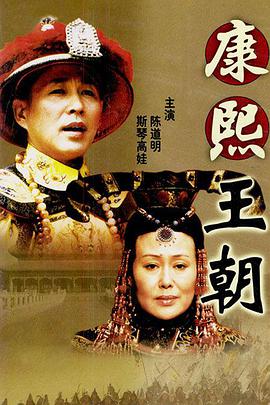The rule of Zhenguan 贞观之治

- Updated:
2024-02-23 10:46 - Directors: Zhang Jianya
- Writers: Acheng / Meng Xianshi
- Actors: Ma Yue / Miao Pu / Ma Jingwu / Ma Shaohua / Lu Jianmin / Jin Shijie / ......
- Types: War / History / Ancient Costume / Plot
- Regions: Chinese mainland
- Languages: Mandarin
- Date: 2006-12-26
- Episodes: 50
- Duration: 46 mins
- Alias:
- Rating: 9.2
Synopsis of The rule of Zhenguan
In 620 AD, in July of the third year of Wude in the Tang Dynasty, the second son of the founding emperor of the Tang Dynasty, Li Yuan, King of Qin Li Shimin, was ordered by his father to conquer Luoyang. Luoyang was the eastern capital of the former Sui Dynasty and played a decisive role in all aspects of politics, military and economy. The Battle of Luoyang became the most important battle for the Tang Dynasty to unify the Central Plains. After several months of siege by Li Shimin's army, Luoyang City no longer had the power to confront the Tang army. Luoyang's leader Wang Shichong had no choice but to pin his hopes on reinforcements. Dou Jiande of Hebei led hundreds of thousands of troops to march toward Luoyang. To break the siege of Luoyang. Li Shimin ordered his younger brother Li Yuanji, King of Qi, to stay at the base camp and personally lead troops to attack Dou Jiande's army. Li Shimin took full advantage of the terrain, defeated Dou Jiande's army with thousands of men, and captured Dou Jiande himself. Seeing that the situation was over, Wang Shichong had no choice but to surrender in Kaicheng. Li Shimin defeated the two most powerful enemies of the Tang Dynasty in one fell swoop, and his achievements spread throughout the world. In order to commend Li Shimin's achievements, Li Yuan named him General Tiance and granted him various privileges. His status was almost as good as that of the prince. The rapid expansion of Li Shimin's power aroused Li Yuanji's jealousy and made Prince Li Jiancheng deeply uneasy. Li Yuanji's response to power and...
Screenshots of The rule of Zhenguan
People also like
The rule of Zhenguan free download
WARNING
All resources on SeedHub come from the Internet and are only for your learning and use. Please be sure to delete them in time!
Blu: Made from the officially released Blu-ray disc.
4K: The pixel resolution of 4096×2160, which is 4 times the resolution of 2K projectors and high-definition TVs, and belongs to ultra-high-definition resolution.
Remux: Losslessly extract the video data and audio data in HD-DVD and BluRay-DVD and compress it.
Atmos: Dolby sound effects, which breaks through the traditional concepts of 5.1 and 7.1 channels, can combine film content to present dynamic sound effects.
iNT: The iNT compression team will make different parameter settings for movies, often with higher quality.
-
贞观之治.2006.50集全.国语.简繁中字£CMCT小鱼 /
20.68G2022








